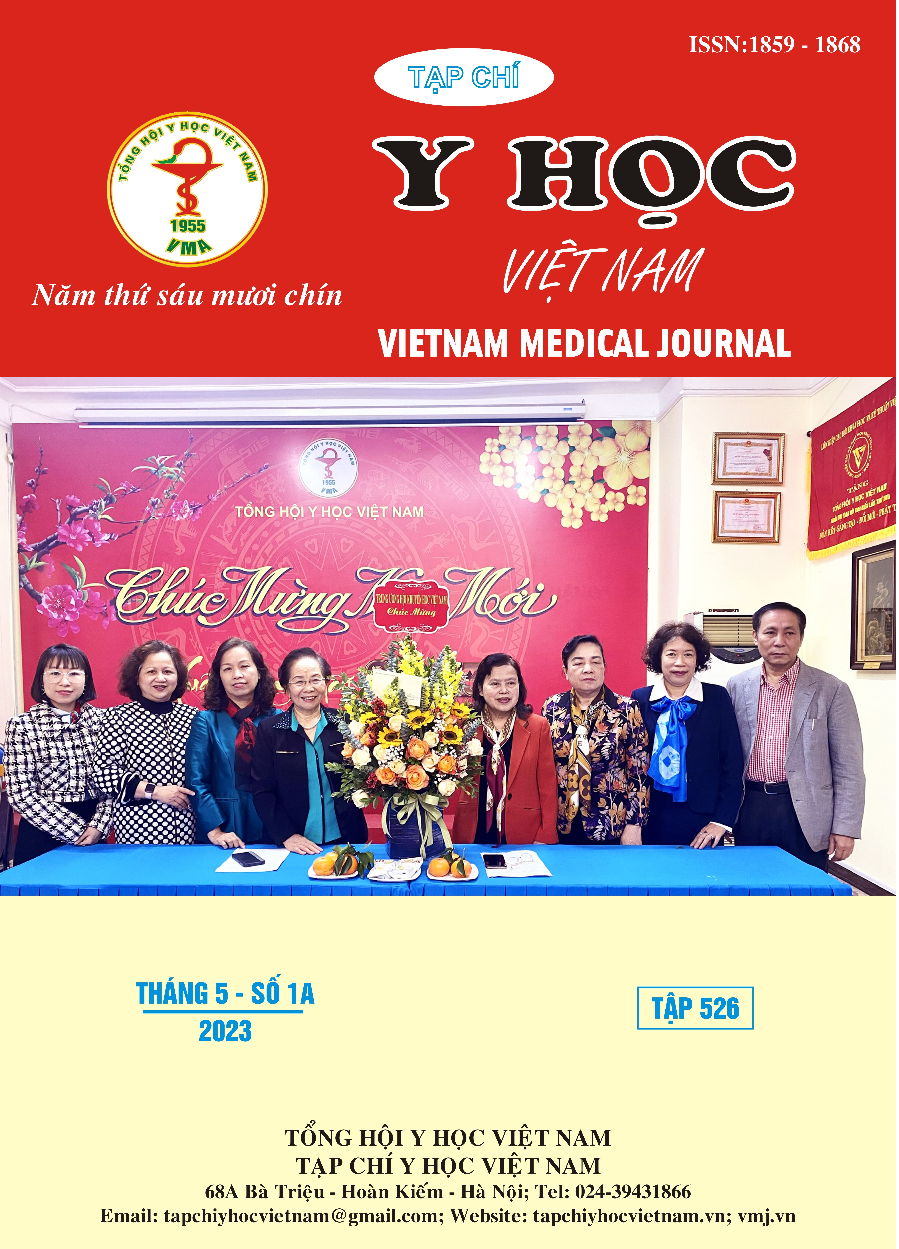INVESTIGATION OF ANTIBIOTIC RESISTANCE OF BACTERIA THAT CAUSE ABDOMINAL INFECTIONS AT THE DEPARTMENT OF GENERAL SURGERY, HA NOI MEDICAL UNIVERSITY HOSPITAL
Main Article Content
Abstract
Background: Intra-abdominal infection is a common acute disease in a surgical emergency at Hanoi Medical University Hospital. The antibiotic resistance of bacteria is increasing, causing treatment failure, increasing the risk of death, and prolonging hospital stay, it is necessary to have bacterial studies to help doctors choice in empiric antibiotic use. Subjects and methods: This is a retrospective study, conducted by collecting and analyzing the medical records of patients with intra-abdominal infections, that were assigned to culture to identify bacteria hospitalized at the Department of General Surgery - Hanoi Medical University Hospital in the period from June 2022 to November 2022. Results: Biliary tract infections account for the largest proportion of intra-abdominal infections is 77,27%, a high proportion of Gram-negative bacteria with broad-spectrum β-lactamase enzymes (ESBL): Escherichia coli is 63.16%, Klebsiella spp. is 26.31%. The three main pathogenic bacteria strains in intra-abdominal infections are Escherichia coli, Klebsiella, and Enterococcus spp. Escherichia coli resistant to ampicillin/sulbactam is 91.43% and ciprofloxacin is 73.68%. Klebsiella spp. has high resistance to antibiotics such as ampicillin/sulbactam is 100%, ciprofloxacin is 77.78% and cefotaxime is 75%. Conclusion: The situation of Gram-negative ESBL bacteria in patients with intra-abdominal infections is very alarming, the level of antibiotic resistance of Gram-negative bacteria to penicillins, 3rd generation cephalosporins, and quinolones the higher.
Article Details
Keywords
intra-abdominal infection, antibiotic resistance, ESBL, Escherichia coli, Klebsiella spp., Enterococcus spp
References
2. Pieracci FM, Barie PS. (2007). “Management of severe sepsis of abdominal origin”Scand J Surg, 96(3):184-96.
3. Mulier S, Penninckx F, Verwaest C. (2003). “Factors Affecting Mortality in Generalized Postoperative Peritonitis: Multivariate Analysis in 96 Patients”, World J Surg, 27(4):379-84.
4. Rimola A, García-Tsao G, Navasa M. et al (2000). “Diagnosis, treatment and prophylaxis of spontaneous bacterial peritonitis: a consensus document”, Journal of Hepatology, 32:142-153.
5. Nguyễn Văn Kính (2010). ”Phân tích thực trạng: Sử dụng kháng sinh và kháng kháng sinh ở Việt Nam”, nghiên cứu quốc gia Việt Nam GARP.
6. Hà Thị Thúy Hằng, Đặng Quốc Ái (2015). “Thực trạng sử dụng kháng sinh trong điều trị nhiễm khuẩn ổ bụng tại khoa Ngoại Bệnh viện Đại học Y Hà Nội”, tạp chí Y học thực hành
7. Mazuski JE, Tessier JM, May AK, et al (2017). “The Surgical Infection Society Revised Guidelines on the Management of Intra-Abdominal Infection”. Surg Infect (Larchmt); 18:1.
8. McHutchison JG, Runyon BA (1995). “Spontaneous bacterial peritonitis. In: Gastrointestinal and Hepatic Infections”, Surawicz CM, Owen RL (Eds), WB Saunders, Philadelphia. p.455.
9. Phạm Hùng Vân (2011). “Vi khuẩn Gram âm đề kháng kháng sinh thực trạng tại Việt Nam và các điểm mới về chuẩn mực biện luận đề kháng”, tạp chí y học Hồ Chí Minh , tr.138-148.
10. Võ Thái Dương, Đỗ Hoàng Long, Nguyễn Thị Diệu Hiền (2022). “Khảo sát vi khuẩn Escherichia Coli sinh enzyme β Lactamase phổ rộng phân lập tại bệnh viện đa khoa trung ương Cần Thơ”, Tạp chí Y Học Việt Nam, 9(2), tr: 87-91.


